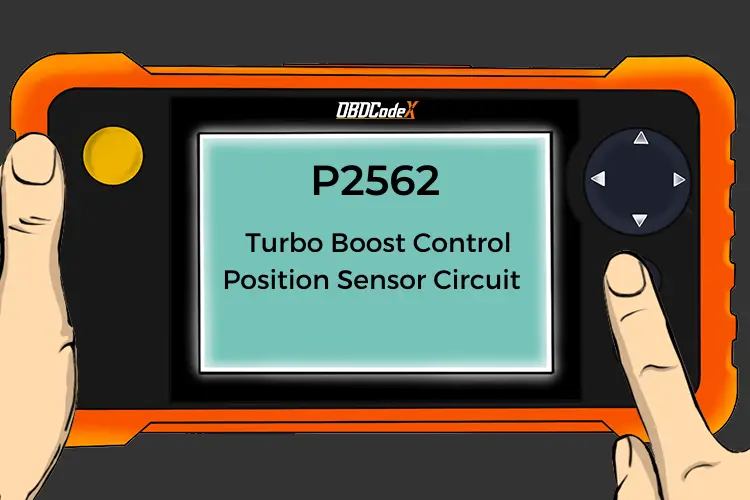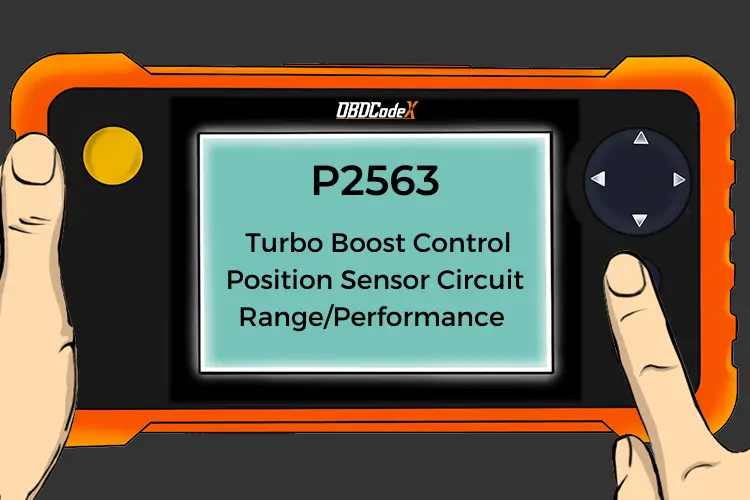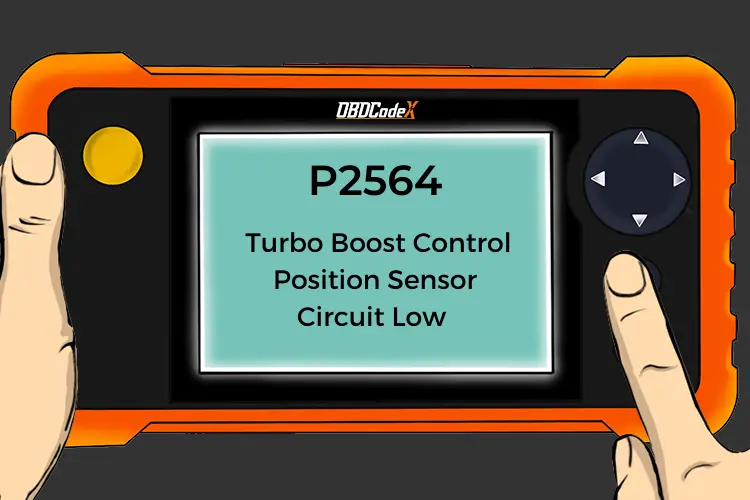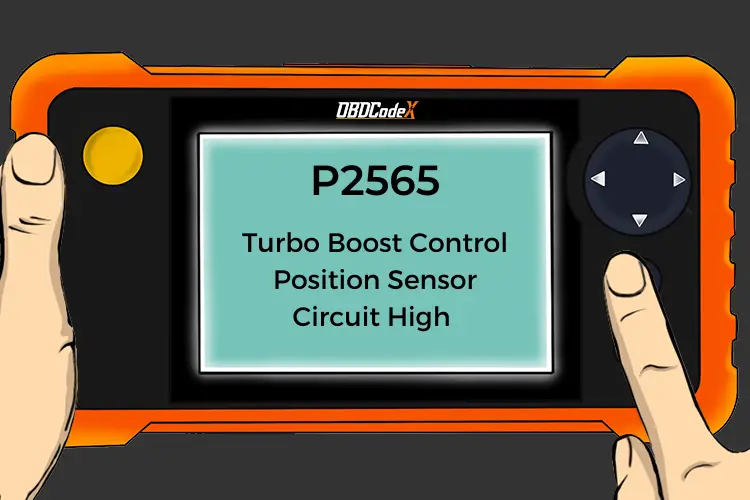P2566: Turbo Boost Control Position Sensor Circuit Intermittent
Is your scanner showing P2566?
No worries. We'll show you what it means and how to deal with it.
P2566: Turbo Boost Control Position Sensor Circuit Intermittent
OVERVIEWWhat Does The P2566 Code Mean?
This trouble code can typically apply to all turbocharged OBDII equipped engines, but shows up more often in certain Hyundai and Kia vehicles. The Turbo Boost Control Position Sensor (TBCPS) converts the turbo boost pressure into an electrical signal for the Powertrain Control Module (PCM).
The Turbo Boost Control Position Sensor (TBCPS) provides additional turbo boost pressure information to the Powertrain Control Module or PCM. This information is typically used to fine-tune the amount of boost provided to the engine by the turbocharger.
The boost pressure sensor provides the PCM with the rest of the information needed for turbo boost pressure calculations. Anytime there is an electrical problem with the TBCPS, depending on how the manufacturer wants to identify the fault, the PCM will set code P2566. This code is considered to be an electrical circuit fault only.
It also looks at the voltage signal from the TBCPS sensor to determine if it is correct at initial Key On Engine Off. This code could have been set because of mechanical (typically exhaust back pressure / intake restrictions) or electrical (boost pressure sensor/boost control position sensor circuit) issues.
Troubleshooting steps may vary depending upon manufacturer, type of sensor and wire colors to the sensor.
What Are The Symptoms Of The P2566 Code?
Symptoms of a P2566 code may include:
- Malfunction Indicator Light On
- Poor performance
- Hesitation during acceleration
- Decrease in fuel economy
What Are The Potential Causes Of The P2566 Code?
Potential causes for this code to set are:
- Open in the signal circuit to the TBCPS sensor – most likely
- Short to voltage in the signal circuit to the TBCPS sensor
- Short to ground in the signal circuit to the TBCPS sensor
- Open in power or ground at TBCPS sensor – most likely
- Failed TBCPS Sensor – possible
- Failed PCM – unlikely
How Can You Fix The P2566 Code?
Step 1
A good starting point is always to check for technical service bulletins (TSB) for your particular vehicle. Your issue may be a known issue with a known fix put out by the manufacturer and can save you time and money during diagnosis.
Step 2
Next, locate the TBCPS sensor on your particular vehicle. This sensor is usually found directly screwed / bolted into the turbocharger housing. Once located, visually inspect the connector and wiring. Look for scraping, rubbing, bare wires, burn spots or melted plastic.
Pull the connector apart and carefully inspect the terminals (the metal parts) inside the connector. See if they look burned or have a green tint indicating corrosion. Use electrical contact cleaner and a plastic bristle brush if cleaning of the terminals is needed. Let dry and apply electrical grease where the terminals contact.
Step 3
If you have a scan tool, clear the diagnostic trouble codes from memory, and see if P2566 code returns. If it does not, then the connections were most likely your problem.
If the P2566 code does return, insure that you have good turbo boost pressure by testing with a mechanical gauge. Check with the manufacturers specs for your vehicle. If the boost pressure does not pass, determine the root problem for the low boost pressure (possible exhaust restrictions, wastegate issue, bad turbocharger, intake leaks, etc), clear codes and retest. If the P2566 is now gone, then the problem was mechanical.
Step 4
If the P2566 code does return, we will need to test the TBCPS sensor and its associated circuits. With the Key Off, disconnect the electrical connector at the TBCPS sensor. Connect a Digital Voltmeter black lead to the ground terminal at the TBCPS sensor wiring harness connector.
Connect the red lead of the Digital Voltmeter to the power terminal at the TBCPS sensor wiring harness connector. Turn Key On Engine Off. Check manufacturer’s specifications; voltmeter should read either 12 volts or 5 volts. If not, repair open in wiring on the power or ground wire, or replace the PCM.
Step 5
If the prior test passed, we will need to test the signal wire. With the connector still disconnected, move the red lead of the voltmeter from the power wire terminal to the signal wire terminal. The voltmeter should now read 5 volts. If not, repair the open on the signal wire, or replace the PCM.
Step 6
If all prior tests have passed and you continue to get a P2566, this would most likely indicate a failed TBCPS sensor, although a failed PCM could not be ruled out until the TBCPS sensor had been replaced. If unsure, seek assistance from a trained automotive diagnostician. PCMs must be programmed, or calibrated to the vehicle in order to be installed correctly.
Recommended Parts
Below are some recommended auto parts to help you address the trouble code affecting your vehicle and get it running smoothly again:
>>> Twippo 372Pcs Waterproof Wire Connectors Kit
>>> ECU
>>> 12V Auto Waterproof Fuse Relay Box Block Kit
Note: During the purchasing process, please check carefully whether the part you want to buy fits your car!
Reference Sources
ENGINE CONTROL SYSTEM [GASOLINE ENGINE (V-6)] SERVICE MANUAL for P2566 – Pages 847-849.




